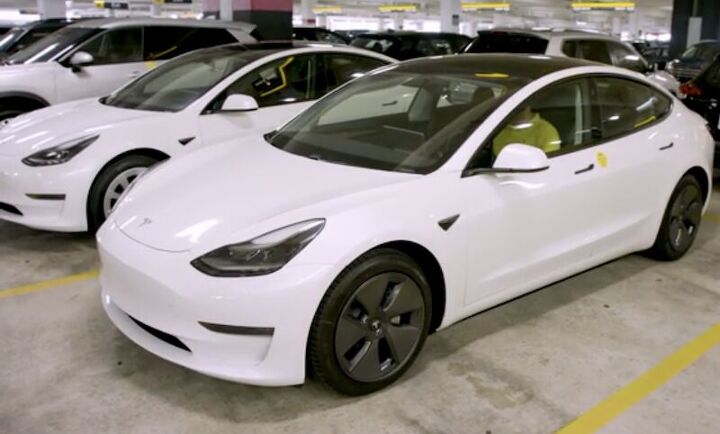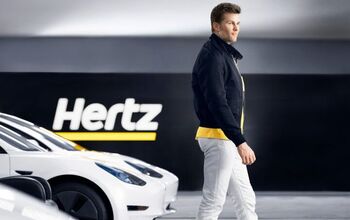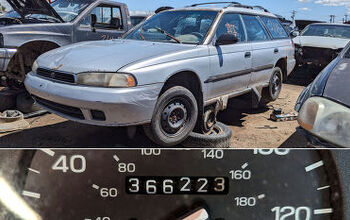Hertz CEO Leaves After Buying 100,000 Teslas

Almost all of us have made a boneheaded purchase or three in our lives. But few are notable as the debacle at Hertz, a company which most gearheads know decided to buy tens of thousands of electric vehicles only to bin them at severely subvented prices. Now, the CEO is stepping down from his role.
Readers will recall Hertz made the decision in 2021 to go all-in on electric vehicles, committing to buying a hundred thousand Tesla cars which would clearly expand its fleet of EVs by leaps and bounds. Just over two years later, the company cited low demand and high repair costs as some reasons for divesting large swaths of its EV fleet. This flood of product on the used car market surely didn’t help valuations of the things, though nor did Tesla itself during a round of its own price cuts.
Thoughts on why the EV experiment at Hertz didn’t work are all over the map, with extreme reactions from both ends of EV fandom being as annoying as they are predictable. The truth, as always, likely lies somewhere in the middle. Our own Matt Posky rightly points out it’s a function of how rental cars are generally used, where it is not unusual for renters to pile on 700 miles in a day. This can be difficult in an EV.
Also not helping matters is that Hertz seems to have invested in the cars but not any supporting infrastructure. If, as most reports indicate, the company took equal approach to an EV’s returning state of charge as it does with an ICE car’s fuel level, that means renters would have been required to loiter at a Level 3 charger prior to returning the thing. Raise your hand if you’ve ever skidded sideways into the last gas station before hitting the rental place, having forgotten to fuel up with only a short amount of time before yer flight leaves? Exactly. If Hertz had baked something into their plans which plunked numerous Level 3 DC chargers at each location, along with provisions in the rental agreement for bringing the thing back with few electrons in the battery, things might have turned out differently.
But they didn’t, so it hasn’t. And, as a result, CEO Stephen Scherr is out on his ear. Don’t feel too badly – it is reported in 2022 he raked in $182.1 million including $178 million in stock awards and a salary of $1.27 million. A filing by Hertz is said to have stated “Mr. Scherr’s wages for 2022, calculated for purposes of his Form W-2 issued by the company, were $27,181,395.”
[Image: Hertz via video screenshot]
Become a TTAC insider. Get the latest news, features, TTAC takes, and everything else that gets to the truth about cars first by subscribing to our newsletter.

Matthew buys, sells, fixes, & races cars. As a human index of auto & auction knowledge, he is fond of making money and offering loud opinions.
More by Matthew Guy
Latest Car Reviews
Read moreLatest Product Reviews
Read moreRecent Comments
- ToolGuy "what is the appropriate strategy for automakers to pursue going forward?"• Twin-turbocharged straight-six engine of 2,993cc displacement, obviously.
- Matt Posky EVs are fine. People can buy them. Companies should build them. But the regulations and products have to be sound. The issue is that they aren't -- whether we are talking about all-electric vehicles or combustion ones.
- MaintenanceCosts The fact is that if you are in product planning for a worldwide automaker the Chinese market comes first, the European market second, and our market after that.That means you have to have a lineup of EVs in at least the segments that sell in China and Europe. That means small to medium CUVs, city cars, and maybe a couple of global-size SUVs and pickups. If you have development dollars left over after serving your biggest markets, maybe you can put them into North America-specific products like large CUVs and full-size pickups. At least for the next 10 years you will need an ICE hybrid powertrain to go with those products.Non-hybrid ICE is a dead end for all but the tiniest niche of sports cars.
- Duties I’ve never liked Nissan, but think the new Rogue and Parhfinder are at least, finally attractive. I will never own an EV. Bye Nissan. Sayonara.
- Daniel Bridger Bye, bye Nissan.


































Comments
Join the conversation
He should have bought the used Teslas with his stock options. How many used Tesla dealers are there? He could have started a national chain!
Another problem with Teslas as rental cars: Their unusual ergonomics take some time to figure out. When you get into a rental car, you want to quickly come up to speed on the basic controls so you can be on your way. This is not so easy in a Tesla.